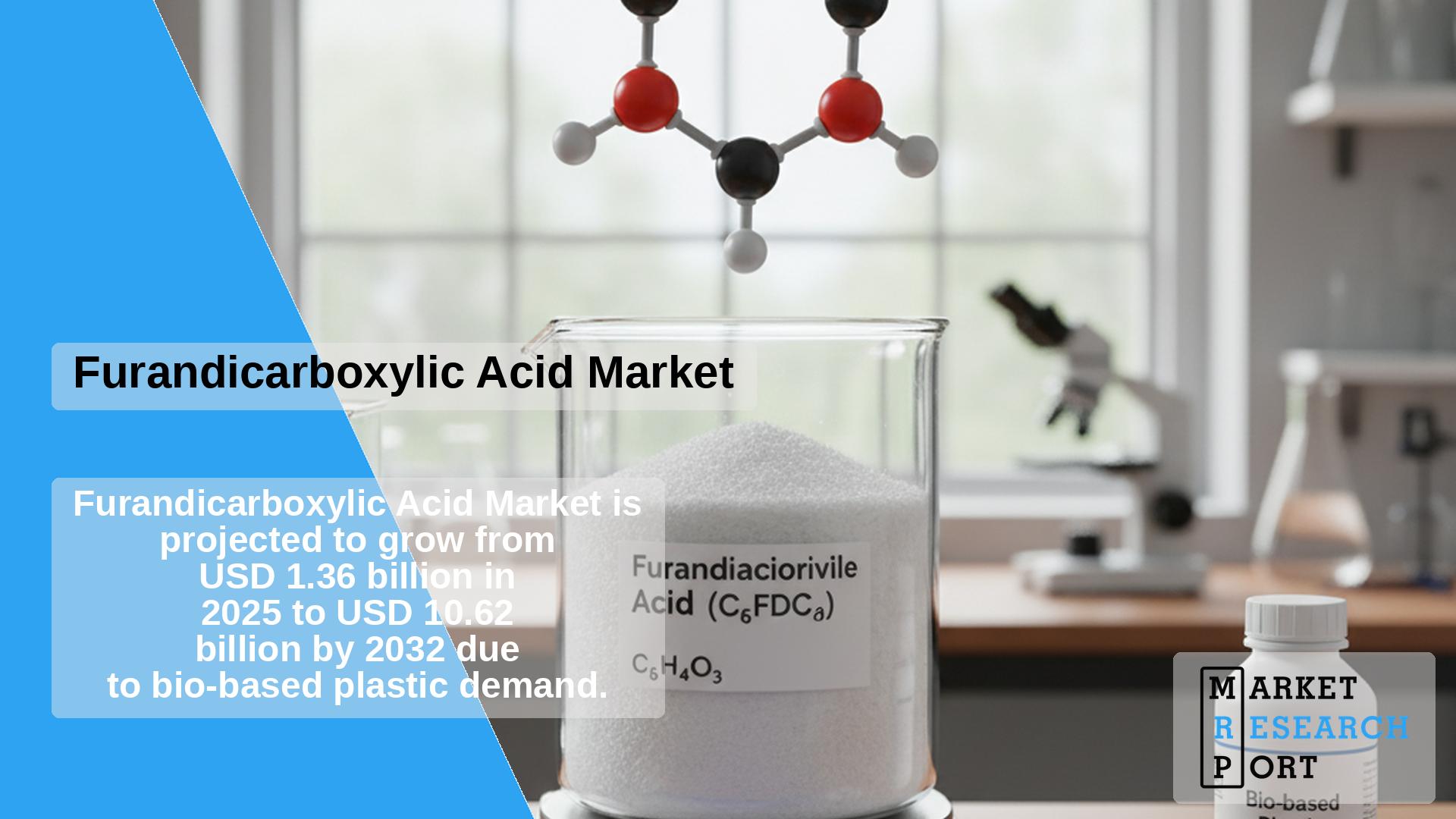
The global furandicarboxylic acid (FDCA) market was valued at USD 10.92 billion in 2025 and is anticipated to reach USD 88.47 billion by 2030, growing at a CAGR of 32.6% from 2025 to 2030. Growth is being driven by accelerating demand for sustainable, bio-based chemical alternatives as industries seek to reduce dependency on fossil fuel-derived feedstocks. FDCA is an advanced bio-based building block that serves as a promising replacement for widely used petrochemical compounds such as terephthalic and adipic acids.
FDCA, recognized by the U.S. Department of Energy as one of the top bio-based platform chemicals, is witnessing robust investment and research efforts worldwide. Its production from renewable resources, such as sugars via hydroxymethylfurfural (HMF), renders it a key enabler of sustainable polymer manufacturing. Improvements in the catalytic oxidation and purification processes are rapidly lowering production costs, bringing FDCA closer to full-scale commercial viability. The compound’s eco-friendly characteristics, strong barrier performance, and compatibility with existing polymer processing systems position it as a preferred feedstock across plastics, coatings, and textile applications.
Partnerships within the bio-economy ecosystem—between suppliers, technology developers, and packaging manufacturers—are vital to accelerating industrial-scale adoption. Emerging collaborations focus on advancements in sustainable catalyst technologies and efficient biomass conversion routes to improve yield and product quality at lower costs. Major feedstock suppliers such as Cargill are strengthening raw material availability for production plants through long-term supply agreements, supporting the rising demand for bio-based alternatives.
The PET application segment remained dominant in 2025, representing 84.7% of the overall market. This growth is attributed to increasing use in beverage bottles, containers, and flexible packaging, where FDCA-derived PEF is emerging as a sustainable and high-performance alternative to conventional PET. PEF combines superior mechanical properties, excellent gas barrier efficiency, and full recyclability, making it highly attractive for packaging of food and carbonated drinks.
The polyamide segment is projected to be the next major growth area, supported by research into lightweight and durable biopolymer structures for engineering materials. Moreover, FDCA esters are gaining attention as eco-friendly substitutes for phthalate plasticizers, reflecting growing industry focus on non-toxic production pathways.
Europe led in 2025, accounting for 47.8% of the global market due to progressive sustainability regulations and strong consumer preference for bio-based packaging materials. The region’s focus on circular economy principles and rapid industrialization of PEF manufacturing in the Netherlands, France, and Germany continues to propel the market forward. Technological innovations and supply chain collaborations have made production processes more economical and scalable.
Asia Pacific is projected to record the fastest growth rate through 2030, driven by expanding manufacturing bases in China and Japan along with increasing government investment in bio-based plastics. North America remains a key contributor due to advances in catalytic R&D and vast availability of agricultural resources used for sugar-based feedstocks, supporting bio-refinery expansion.
Leading market participants are emphasizing strategic alliances, technological advancements, and sustainable manufacturing as part of their competitive growth strategies. Expansions in production capacity, mergers, and first-of-a-kind plant commissioning activities are shaping global market dynamics.
| Report Attribute | Details |
| Market Size Value in 2025 | USD 10.92 billion |
| Revenue Forecast in 2030 | USD 88.47 billion |
| Growth Rate | CAGR of 32.6% from 2025 to 2030 |
| Historical Data | 2019–2024 |
| Forecast Period | 2025–2030 |
| Quantitative Units | Volume in kilotons; revenue in USD million/billion; CAGR from 2025 to 2030 |
| Report Coverage | Revenue analysis, company ranking, technological trends, and market drivers |
| Segments Covered | Application, region |
| Regional Scope | North America; Europe; Asia Pacific; Central & South America; Middle East & Africa |
| Country Scope | U.S.; Germany; France; Italy; China; Japan |
| Key Companies Profiled | Avantium; Synbias Pharma; V & V Pharma Industries; Carbone Scientific; Tokyo Chemical Industry Co., Ltd.; Chemsky (Shanghai) International Co., Ltd. |
The study forecasts volume and revenue expansion across key product applications and regional segments from 2019 to 2030.
How large is the FDCA market in 2025?
The global furandicarboxylic acid market was valued at USD 10.92 billion in 2025.
What is the expected growth rate of the FDCA market?
The market is expected to grow at a CAGR of 32.6% from 2025 to 2030, reaching USD 88.47 billion by the end of the period.
Which segment holds the largest share of the FDCA market?
The PET application segment led with 84.7% of total revenue in 2025 due to expanding packaging demand and the rise in bio-based PEF production.
Who are the major players operating in the FDCA market?
Leading companies include Avantium, Synbias Pharma, V & V Pharma Industries, Carbone Scientific, Tokyo Chemical Industry Co., Ltd., and Chemsky (Shanghai) International Co., Ltd.
What factors are driving FDCA market growth?
Key growth factors include the increasing replacement of petroleum-based chemicals with biodegradable alternatives, technological advancements in oxidation processes, and growing consumer demand for sustainable materials across packaging, textiles, and coatings.